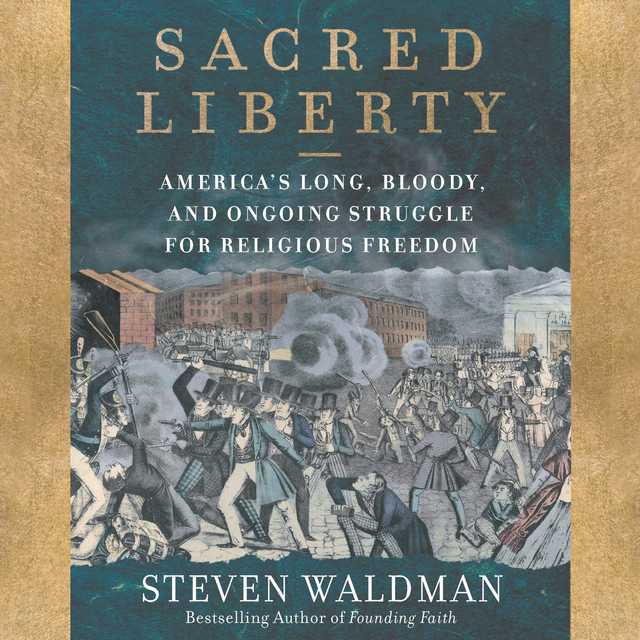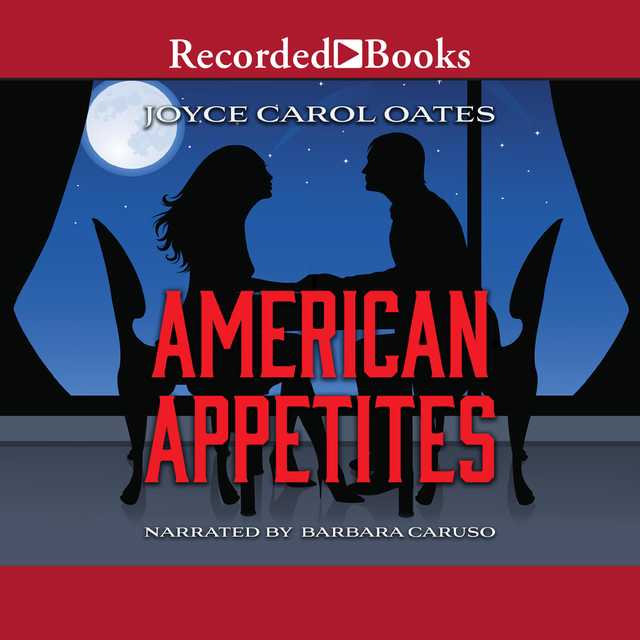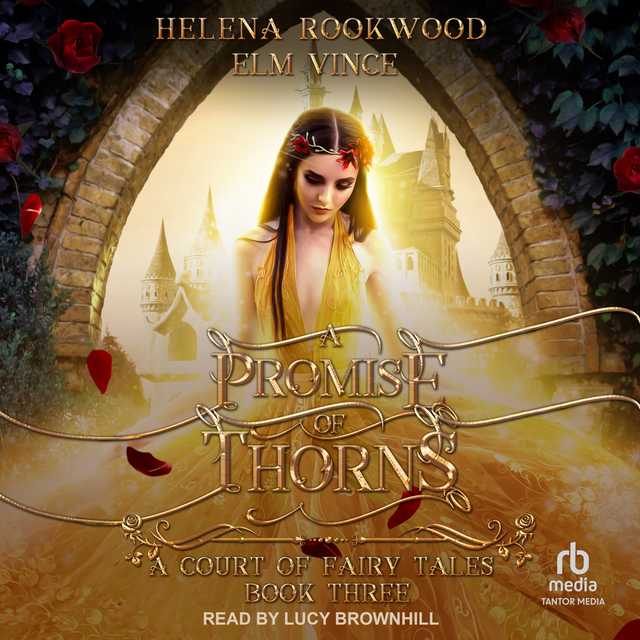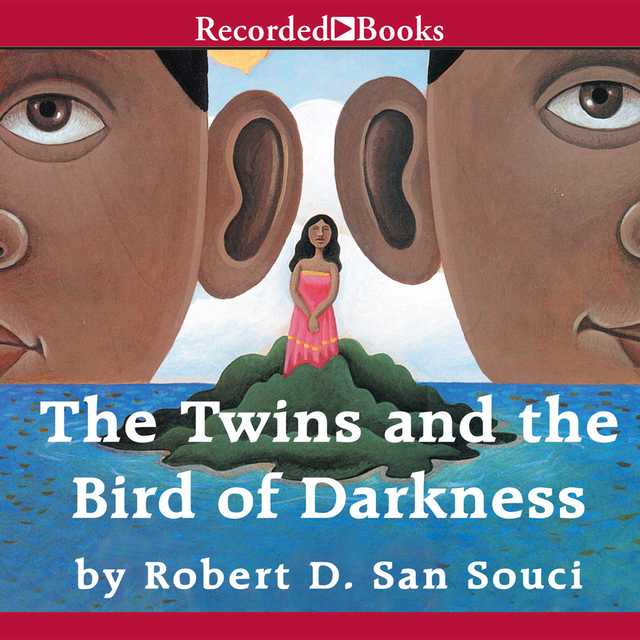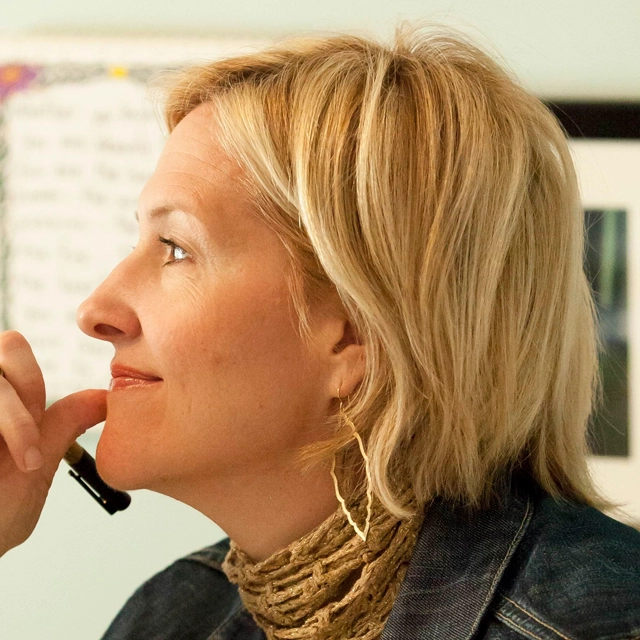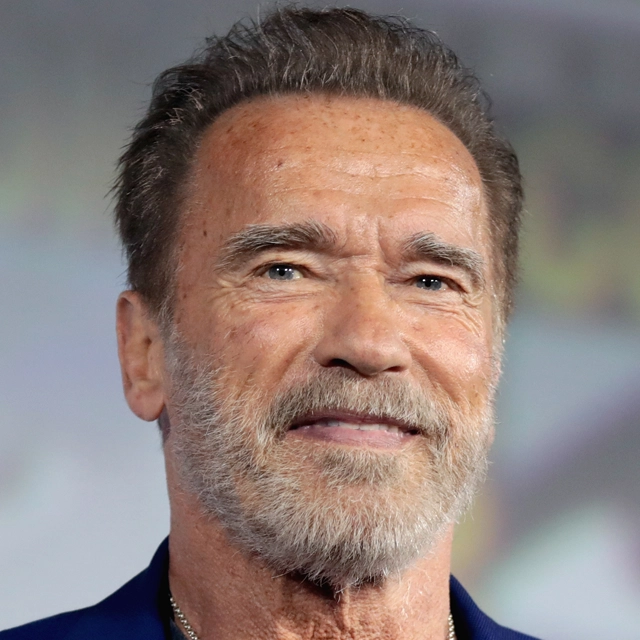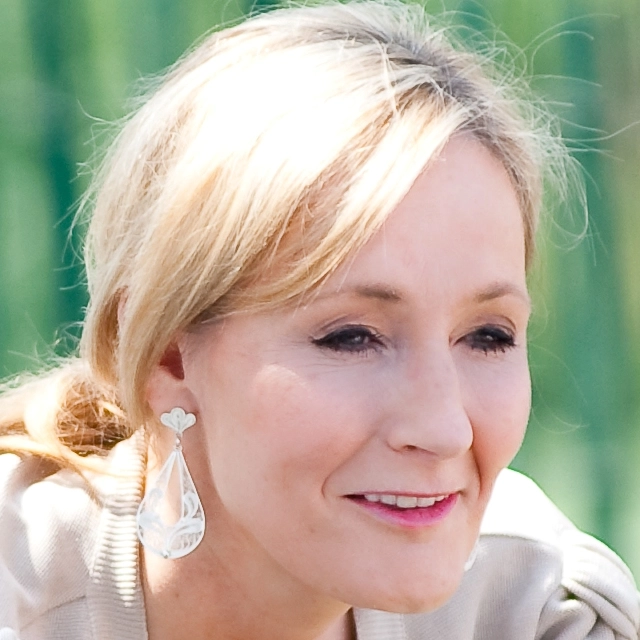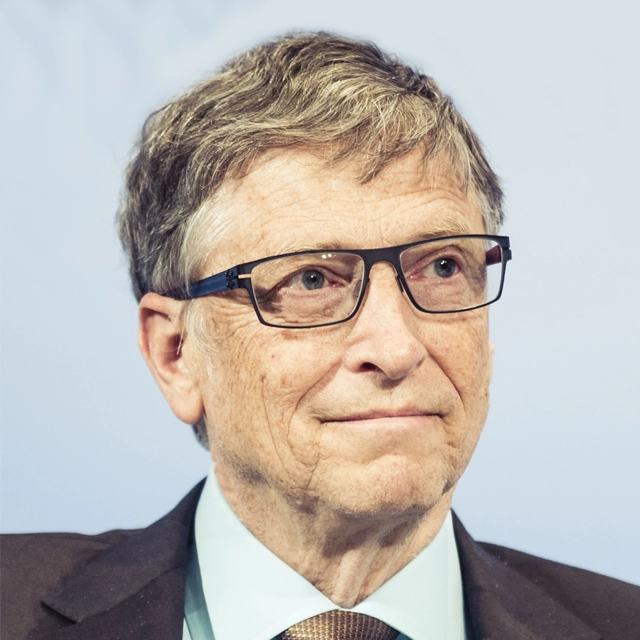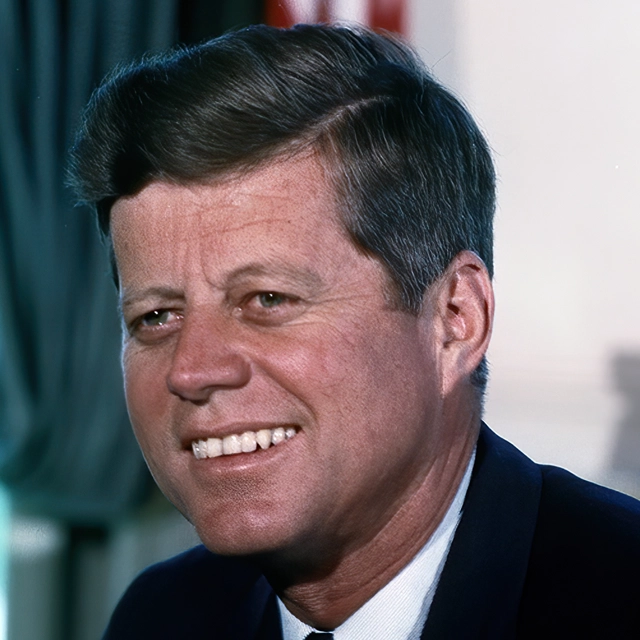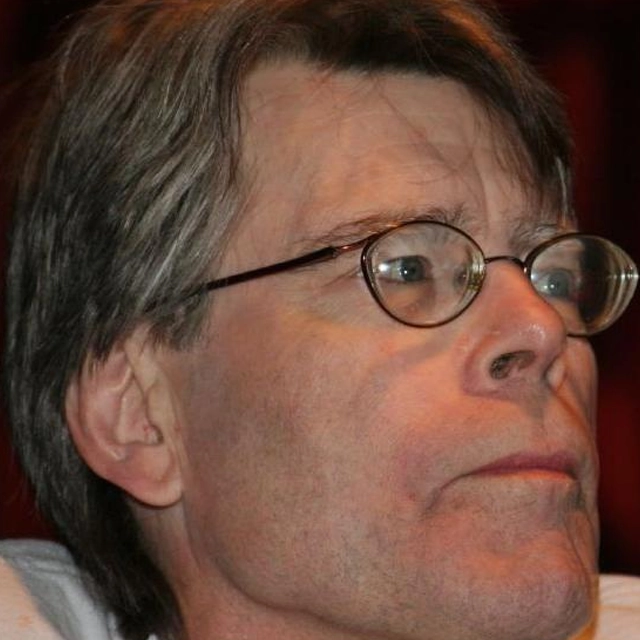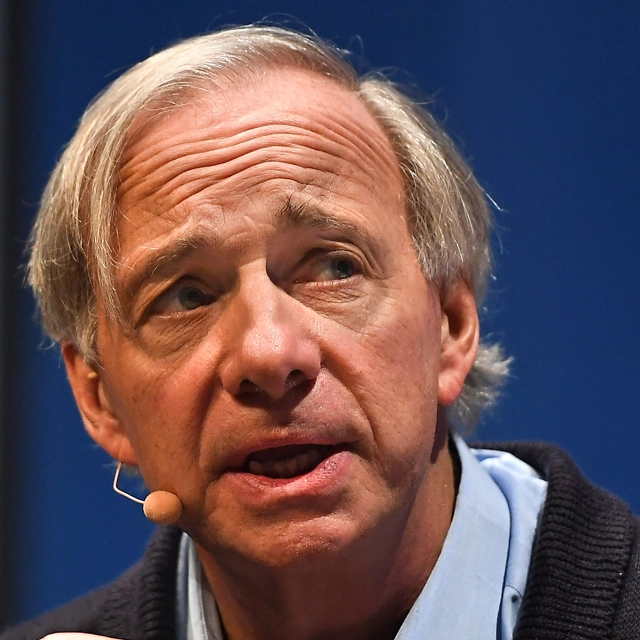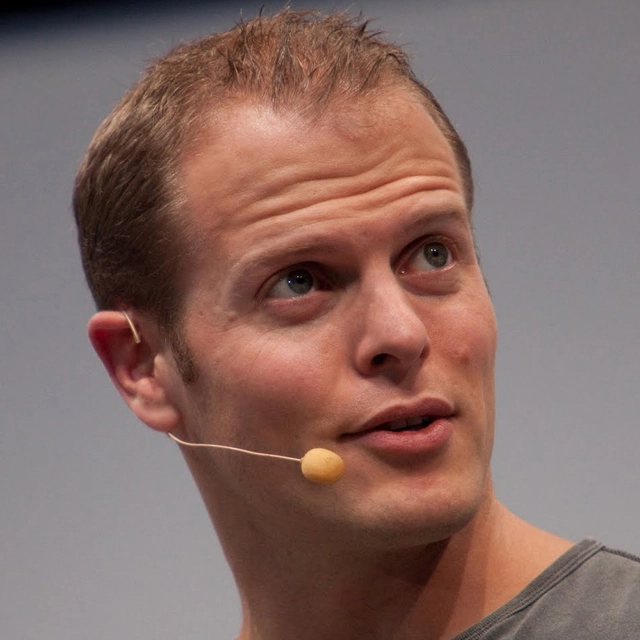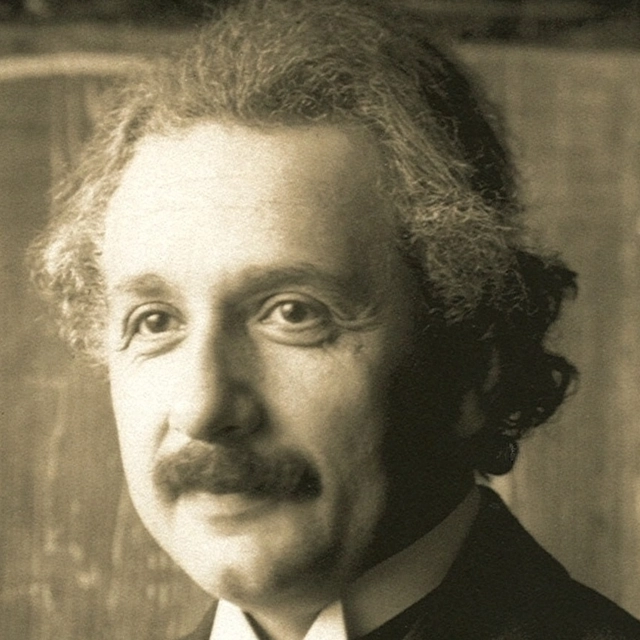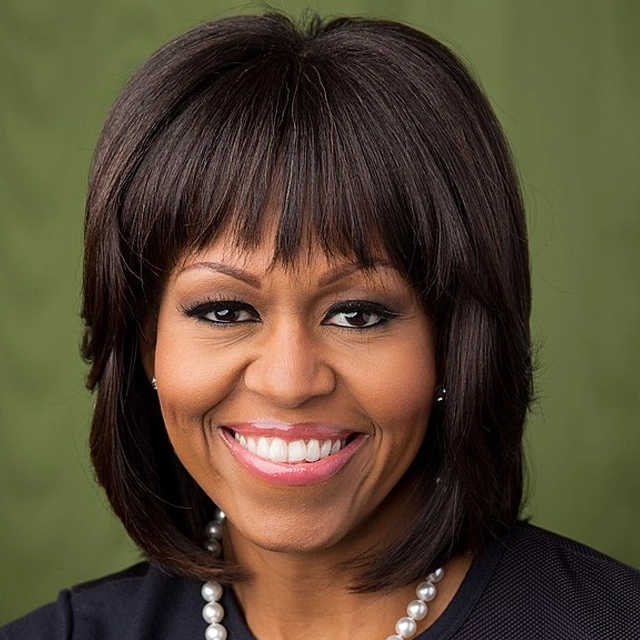Sacred Liberty Audiobook Summary
Sacred Liberty offers a dramatic, sweeping survey of how America built a unique model of religious freedom, perhaps the nation’s “greatest invention.” Steven Waldman, the bestselling author of Founding Faith, shows how early ideas about religious liberty were tested and refined amidst the brutal persecution of Catholics, Baptists, Mormons, Quakers, African slaves, Native Americans, Muslims, Jews and Jehovah’s Witnesses. American leaders drove religious freedom forward–figures like James Madison, George Washington, the World War II presidents (Roosevelt, Truman, and Eisenhower) and even George W. Bush. But the biggest heroes were the regular Americans – people like Mary Dyer, Marie Barnett and W.D. Mohammed — who risked their lives or reputations by demanding to practice their faiths freely.
Just as the documentary Eyes on the Prize captured the rich drama of the civil rights movement, Sacred Liberty brings to life the remarkable story of how America became one of the few nations in world history that has religious freedom, diversity and high levels of piety at the same time. Finally, Sacred Liberty provides a roadmap for how, in the face of modern threats to religious freedom, this great achievement can be preserved.
Other Top Audiobooks
Sacred Liberty Audiobook Narrator
David Colacci is the narrator of Sacred Liberty audiobook that was written by Steven Waldman
STEVEN WALDMAN is the national bestselling author of Founding Faith and co-founder of Report for America, a national service program that places talented journalists into local newsrooms. He was National Editor of US News & World Report, National Correspondent for Newsweek, and co-founder of Beliefnet. His writings have also appeared in The Wall Street Journal, The New York Times, Washington Post, National Review, Christianity Today, The Atlantic, First Things, The Washington Monthly, Slate, The New Republic and others. He lives in Brooklyn with his wife, Amy Cunningham.
About the Author(s) of Sacred Liberty
Steven Waldman is the author of Sacred Liberty
More From the Same
- Author : Steven Waldman
- Founding Faith
- Publisher : HarperAudio
- Abraham
- American Gods [TV Tie-In]
- Dead Ringer
- House of Sand and Fog
- Prey
Sacred Liberty Full Details
| Narrator | David Colacci |
| Length | 14 hours 43 minutes |
| Author | Steven Waldman |
| Category | |
| Publisher | HarperAudio |
| Release date | May 07, 2019 |
| ISBN | 9780062932884 |
Subjects
The publisher of the Sacred Liberty is HarperAudio. includes the following subjects: The BISAC Subject Code is 21st Century, History, United States
Additional info
The publisher of the Sacred Liberty is HarperAudio. The imprint is HarperAudio. It is supplied by HarperAudio. The ISBN-13 is 9780062932884.
Global Availability
This book is only available in the United States.
Goodreads Reviews
Robert
January 24, 2020
The United States prides itself on its protections of religious freedom. We tell the story of how the Pilgrims came to these shores so they might have religious liberty. Truth be told, they were only interested in freedom for themselves. The same was true of most of those who made their way to the shores of North America. At the time that the nation was founded, most states had some form of an established church. Most often that was either Anglican or Congregational. There were a few states, like Rhode Island and Pennsylvania that offered religious freedom, but they were the exception. Even after the Constitution was ratified, some states kept their establishment, and until the 14th Amendment, the First Amendment protections were not applied to the states, only the federal government. Down through time, religious freedom has been a contested issue. Many assumed that it applied only to Christians, and by Christian that meant Protestant.Steven Waldman's book Sacred Liberty tells the story of how this nation dealt with religious freedom. There is a belief that the United States has always been a beacon of religious freedom, but such is not the case. From the very earliest colonists, those in the majority set the rules for others. In New England, it was the Congregationalists who dominated. In the South, it tended to be Anglicans. Only a few colonies offered some form of freedom. These stories, including the stories of the persecution of Catholics and especially Quakers, is told as a precursor to independence and the establishment of a constitutional republic that at least at the federal level precluded religious tests for office and promised religious freedom, including free exercise. It is with chapter two and the exploration of "Madison's Model," as expressed in the First Amendment, that we get started with the conversation. Madison established the model, but as we see in chapter three, it is the eruption of the Second Great Awakening that undermined the state establishments. While this was true, freedom remained the province of Protestants. The first big question facing the nation was whether Catholics could be granted religious freedom. When the nation was founded Catholics formed a distinct minority of the population, but as time went on and immigration, especially from Ireland and later from southern Europe, this became an urgent concern. It wasn't really resolved until the 1960s. But, it wasn't just Catholics that faced suppression. There was a distinct effort to suppress the religious freedom of African slaves, some of whom were Muslim. Both African spiritualities and Islam were suppressed, and Christianity only reluctantly shared. In chapter six, Waldman notes that the religious freedoms promised by the First Amendment were first applied generally to the states only after the passage of the Fourteenth Amendment. This amendment and its application resulted from the efforts of John Bingham. While we think of the Fourteenth Amendment in terms of ending slavery nationwide, religion was a significant beneficiary. What is important to note is that Bingham believed that this amendment was part of his understanding of a "Divine Plan." (p. 90).The battle for liberty was not yet won. The nation faced the challenge of Mormonism and its practice of polygamy. Mormons defended it based on the free exercise of their religious faith. The courts disagreed, and eventually, polygamy was set aside, but the battle raised important questions about the limits of one's free exercise. Then there was the government effort to ban Native American spiritual practices, including the dances that defined their spirituality. Instead, the government sought to impose Christianity on them, so as to "kill the Indian" within them. Again, not one of our better moments.We hear that God has been run out of the schools, because of the ban on prayer and Bible reading in the schools. What partisans of this effort seem not to understand is that government-sponsored prayer was largely an effort to keep Protestantism in a dominant position. In the early 20th century the KKK emerged as a foe to Catholic immigration. Catholic school systems were developed because of debates over which Bible translation could be used in school. Much of this was rooted in anti-immigration efforts, largely directed at Italians. Again, not one of our better moments, but one that is largely forgotten.What about the Jehovah's Witnesses and their freedom to practice their faith. Their unwillingness to salute the flag, believing it to be idol worship, led to children being suspended from school, adults arrested and sometimes beaten nearly to death. But they persisted in the courts, and some of our freedoms we have today result from their efforts to confront attempts to institute coercive laws against religious communities. World War II saw the elevation of religious freedom and the inclusion of Jews at the table. This is the era in which we began to talk about the Judeo-Christian world. As this was going on the Supreme Court began to rule on religious issues, helping to sort out what establishment and free exercise means. This chapter, chapter 12, is an important one. Melissa Rogers' book Faith in American Public Life goes into much greater detail on these matters, but this is an excellent starting point. Even as the courts began to settle matters, and Protestants, Catholics, and Jews began to solidify their relationships, Congress passed important immigration reforms that allowed millions of Muslims, Buddhists, and Hindus to come to the United States, which opened up the nation to much greater religious diversity. While this was happening conservative Protestants and Catholics began to work together on issues like abortion, as they left aside old animosities. Moving closer to home, evangelicals, perhaps feeling the impact of changing demographics moved from claiming to be the moral majority to being a persecuted minority. That, as we are seeing, has produced political implications.Since 9-11 greater focus has been placed on Islam and its presence in our nation, so Waldman devotes two chapters to the place of Islam in the country. Interestingly, 70% of Muslims voted for George W. Bush in 2000, but in 2016 Donald Trump won as a Republican on a platform that included the suppression of Islam in America. These chapters explore how Islam has navigated these challenges and what it means for the religious freedom of all. Is it only for Christians, or does it apply across the board? As Waldman notes, one effort underway is to delegitimize Islam as a religion, defining it as a political ideology and thus not subject to First Amendment protections. Waldman closes the book with a summation of the journey the nation has been on regarding religious freedom. He points out areas where progress has been made and areas where it is deficient. In other words, this is a contested space. The Constitution may offer protections, but how these protections are applied merits great concern.There are places where I might quibble, especially his reference to David Barton as an influential evangelical historian. Barton is not a historian, he's a propagandist. Otherwise, I was very happy with the presentation. I believe it merits close attention as we try to live out the freedoms imagined by James Madison, where religion flourishes because it is set free from government interference. Waldman is a journalist, but he has a good eye for history. This is worth spending much time with, especially as we debate religious freedom at this time. What will be the future of religious liberty at home? Take a read, a very close read.
Bob
June 07, 2020
Summary: Rather than a given of American religious history, religious liberty has often been honored more in the breach, and fought for by religious minorities excluded from this liberty.One of the mythologies of American history was the commitment from the beginnings of the American experiment to religious liberty, beginning with the earliest Pilgrim and Puritan settlers. The reality was actually quite different. Stephen Waldman traces the struggle for religious liberty beginning with the case of Mary Dyer, branded a Puritan heretic for participating in Anne Hutchinson's Bible studies and eventually becoming a Quaker. On June 1, 1660, she was hung on the Boston Common for her faith. In America.As the colonies developed, a religious patchwork also developed with particular bodies sanctioned by the state, and others struggling for existence, often restricted by while funding the state-supported churches, Anglicans in one colony, Congregationalists in another. The Baptists seemed to have to fight for their rights everywhere. These religious divisions were submerged during the Revolution, with even Catholics receiving a measure of toleration. Real steps forward were taken with the advocacy of Thomas Jefferson, after his correspondence with the Danbury Baptists, and the genius insight of Madison that the best way to foster religious vitality was to take government out of the business of establishing religion or in any way prohibiting its free exercise. Enshrined in the First Amendment, it was a first major step toward religious freedom--at the federal level. No one had yet applied this to individual states. The states would follow later, unleashing a fervor of religious activity, confirming Madison's wisdom. But this at first only applied to Protestants. The arriving Catholic immigrants faced prejudice at different periods, including at one point, opposition from the Klan who expanded their white exclusivism to "100 percent Americans," excluding Catholics from eastern and southern Europe. Likewise, the tribal religions of slaves were exterminated for a Christianity that liberated the soul but held the body captive. Mormons would pose another challenge, with their strange beliefs and polygamy. They would be murdered and driven out of state after state until finding refuge in Utah. Eventually their liberties were recognized with the concession to monogamous marriage. Native peoples also had their own religions, but as they were subjugated, they were forced into residential schools. The aim was to "Kill the Indian, Christianize the Man." Only in 1978 did Congress pass legislation protecting their religious rights. Then it was the Jehovah's Witnesses, and their refusal to salute the American flag, which led to the application of First Amendment freedoms at the state and local level. In more recent years, following World War 2, Waldman traces the Judeo-Christian alliance in public life, He traces the increasing presence of the Supreme Court in religious liberty cases, the influx of people representing the other major world religions--Islam, Hinduism, and Buddhism and modern developments that have led to Evangelical and Catholic alliances, attacks on Islam, the conversion of a religious majority into a "persecuted" religious minority whose religious liberty needs protection.One question Waldman leaves us with is how religious liberty extends to practices that may have impact on the public good, for example, the case of polygamy, or medical treatment when a child's life is at risk. Must pharmacists dispense medications that violate their conscience or bakers or photographers accept clients whose views of marriage they disagree with? In these latter cases, Waldman seems to encourage common sense accommodations rather than laws or court rulings. Of course, this assumes a pluralistic marketplace, a condition that does not exist in all communities. One question Waldman did not address, other than in school prayer discussions, is the protection of the belief and liberty those who believe there is no God. Atheists have also been subject to persecution and discrimination and a chapter addressing the protection of their freedom of conscience, something not explicitly included in the First Amendment, unless one defines atheism as a religion, would have been worth discussing.A recurring theme is that religious liberty often has been the preserve of the religion in power and minorities had to fight for the extension of those rights to them. Waldman demonstrates the genius of Madison and the First Amendment in fostering a vibrant religious landscape. Part of the key was that he realized that political power would sooner or later have a corrupting influence on the religion. The best test of a religion's veracity was its ability to convince prospective followers without compulsion. The best way to protect a nation from religious conflict was to determinedly protect the freedom of conscience for all.This is an important book that underscores the wisdom of applying the First Amendment consistently. To protect the religious freedom of any of us is to protect that of all of us. The real test of religious freedom is, will we defend the liberties of those with whom we disagree or even consider heretical by our own standards? Sadly, our story is too often one of attacking rather than defending the rights of those with whom we differ. For all that, Madison's wisdom has proven itself over time. Will we reflect upon that and continue to preserve this distinctive "first freedom?"
Tom
January 19, 2020
Excellent book about a topic we know too little about, the history of religious liberty, especially in the U.S. You'd be amazed at what it's taken to get us to this point. Even with religious freedom under attack on many fronts in the current political climate, this book points out the uniqueness of the U.S. when it come to this topic.
Todd
March 29, 2022
Review title: America's greatest inventionThat phrase gets prominent large-font display on the back cover of the hardback, a three-page endnote (p. 325, footnote 17) that breaks down the phrase into its individual components, and a central place in the introduction (p. 4) explaining its place in Steven Waldman's history of American religious freedom. And throughout his history Waldman makes the case that religious freedom is the greatest invention in America's history. Religious freedom in his view is more than the separation of church and state,and it is not based on the assumed, implied, or implicit expectation of Christianity as the religion of America. He starts with James Madison, one of the most important authors of the Constitution, who said that "Religion is wholly exempt from its [government's] cognizance", and believed, in Waldman's words, that "the yearning for government validation revealed a profound lack of confidence among Christians." (p. 30). What is this creed of religious freedom that Madison and his fellow Founding Fathers birthed that we have nurtured in sometimes faltering and backsliding steps into this great invention:Religious freedom is a right, not a favor granted to a minority by a benevolent ruler or an indulgent majority.The "state” must not favor one religion over another. That’s true whether the government body in question is the US Congress or the local school board. The majority religion does not get to regulate or push around minority religions. People define for themselves what a religion is and whether it speaks to them. Religions are largely left to govern themselves. Religious expressions by public officials in public places are welcomed but must be inclusive.Our society must often make special accommodations for the religious—meaning we allow believers to sidestep certain laws that would force them to violate their conscience. We bend over backward to allow spiritual journeys to proceed unimpeded. Progress has been largely driven by regular Americans—unheralded religious pioneers and, in some cases, martyrs. (p. 6)Throughout our history, as he documents, minority worshippers at different times such as Baptists and other Dissenters, Catholics, Mormons, Jehovah's Witnesses, and Muslims, as individuals, congregations, and denominations have had to use the tools of the invention (Congress, courts, accommodation, voting, media, and public opinion) to demand and defend their piece of religious freedom. And Waldman makes the point that each of these victories has strengthened the invention--religious freedom--for all of us. "When the Supreme Court protected Jehovah's Witnesses [refusal to salute the flag during World War II], it carved out more room for other faiths to express themselves and live out their beliefs. . . . And we've seen the opposite too, as when efforts to suppress Mormonism in the nineteenth century led to narrowing of rights for others. Religious freedom that isn't universal isn't religious freedom; it's special pleading for a particular denomination." (p. 313)While most Americans are familiar with the importance of the First Amendment for freedom of religion, Waldman makes the important point that it only applied its limit to the national government, not state and local governments, and he cites court cases that proved that limitation holding until the 14th Amendment. That amendment, the handiwork of a devout Christian named John Bingham, states simply that no state can deprive anyone of "life, liberty, or property" without due process, nor deny equal protection under the law to any person (p. 93). While it would take court precedents over years and even decades, "the courts would eventually apply the First Amendment's religion clauses to stop attacks by state and local governments" (p. 90). Evangelical Christians like Bingham during colonial and early American days were then a persecuted minority under the government and restriction of state-supported churches in many states, and they "helped take down the old system--which relied on government support for its nourishment--and showed what could emerge in its place." (p. 61). As Christians like Bingham helped secure religious freedoms for all religions, Christians today who want to take advantage of their once great but now waning majority to solidify their place in the religious" marketplace" by law should both "show a little more confidence in God" (p. 314) and remembering that history of progress from disadvantaged Dissenters to mid 20th century dominance "appreciate each person's right to seek God, even when they detest the person's theology. " (p. 313).Our greatest invention was neither an instantaneous eureka moment nor a steady progression toward success as our history as written by Waldman shows. For example the 19th century War against Catholicism (chapter 9, p. 141ff), which included the first controversy about Bible-reading in school over whose Bible (the Protestant King James, or the Catholic Bible) children should have to read. While Protestants lead that battle, a century later the two religions would find common ground in opposition to abortion. Waldman also devotes chapters to the sad but often overlooked suppression of the religions of Native Americans and slaves,and makes the point that with over 30 million living Americans descended from slaves, had their native religions been preserved and passed down they might numerically be as significant as Judaism, Buddhism, Islam, or Hinduism today (p. 82-83)But we have made progress behind the power of the 14th Amendment and Supreme Court precedents that have worked to protect religions, religious expression, and religious accommodations. The 20th century Court realized its "desire to protect religion from the state could force it to become more involved in sensitive judgments about religious claims." (p. 173). Over time, "the general philosophy that has emerged is that government involvement in over religion should be limited, but also that as a society we should bend over backward to make sure that secular laws don't inadvertently do any damage to religious freedom." (p. 199). While some, mainly Christians, want to chastise our increasingly secular society and public square, in fact much of what is mourned as secularism is actually the ongoing negotiation of how to make accommodations to preserve public expressions of religious freedom. "Conservatives sometimes confuse pluralism (or plain courtesy) with secularism" (p. 244), concludes Waldman.How do we preserve this invention? Waldman in his final chapter addresses a question that as an evangelical Christian had been in my mind as he documents this great American "marketplace of faith" (this phrase used on p. 304 and many other places) . If I believe that my faith (just as many of other faiths believe the same) provides the one true path to eternal salvation and that "we're in an ongoing battle between the forces of good and evil, it's irresponsible to let the chips fall where they may." (p. 305). The answer lies for me in having greater confidence in the God I believe (as I quoted earlier), and especially in living my life to "regain [my] position of moral leadership" (p. 316). I must live so that others see Jesus Christ reflected in my actions, so that I model the Beatitudes and the Golden rule, living out my faith in private and public spaces. Sadly, Waldman says that many only see Christians redefining religious freedom as winning political battles against homosexuality or demonizing Muslims; "The great champions of religious freedom have switched to the wrong side of history." (p. 316)Waldman does a great job documenting this history, providing balanced and professional narrative that would become polemics for their particular faith in the hands of many writers. Interestingly, in the text, author biography in the book, and on his several social media presences I could not find a reference to his particular faith. His biography references writing for many mainstream media outlets (including Christianity Today) and his role as a co-founder of Beliefnet, "the award-winning multifaith website." He has lived out his faith America's greatest invention very well.
MG
May 15, 2019
A wonderful and often surprising history of America’s principles of religious liberty. As it turns out, the combination of separation of church and state as well as the freedom to express faith, especially the protection of religious minorities, is unique in developed countries and unusually successful compared to them. What is even more surprising is that the current form of these principles has taken most of our history to solidify. I think the author makes a strong case for religious liberty being “America’s greatest invention.”
William
July 16, 2019
The United States supposedly has freedom of religion. This is built directly into the Constitution. Now I say supposedly due to the fact that there has usually been friction between different faiths. This is due to the interests of a majority group that takes over and dominates the scene. This is an unusual situation. Usually, a country had an established State-sponsored religion that was supported with tax dollars. The United States led by James Madison decided to do away with that idea. Rather than a state-sponsored religion that has political power, Madison thought it would be better to have a free market situation where people could choose what religion to be.Throughout the history of the United States, we have had several religions that it was popular to hate. From the Puritans despising the Quakers and Baptists to the modern era of people hating Islam and the Muslim peoples, Steven Waldman approaches the situations with sympathy and understanding. Pretty much every religion out there was threatened at one time or another, either in reality or in their constituents imaginations.So Waldman explains that rather than everyone automatically accepting everyone else, the United States has had a series of pariah religions. As I mentioned, it began with the Baptists and Quakers. Then they had enough followers to not be a minority anymore. The Catholics were also considered to be some kind of devilish agent of Satan. I remember hearing about this when I was in school. Back when John F Kennedy was running for president, he had a huge demerit due to the fact that he was Roman Catholic. For some reason, people imagined that he would be a puppet of the Pope and that Rome would be pulling the strings. This is a ridiculous idea.In our modern era, we mostly rally against and satirize and demonize the Muslim people. This is due to the terrorist attacks of September 11 and the other attacks in other countries. The unusual thing about this is that the American people conflate American Muslims with Muslims of other countries. It is true that they follow the pillars of Islam, but that is where the similarities end. Also, with hatred being fueled by imagination, we have people thinking that the Muslims are all misogynist, even in America. This is an unfair assessment and Waldman goes into this in-depth.This book was excellent. Initially, I had my doubts, but they were quickly banished by Waldman’s writing. It also touches close to home since I consider myself an atheist and where else could I exist safely without the protections granted to me by the Constitution? So, while I think the idea of God is a bit silly, I can’t exactly go and dissuade people from their belief. In the same vein, I could attempt to run for political office, but I don’t see myself winning considering my beliefs or lack thereof.
Mich
August 13, 2019
Steven Waldman, in Sacred Liberty, does a wonderful job as he traces the evolution of religious freedom in America, or more aptly, the overthrow of religious intolerance, since that was the real struggle. The earliest colonies seem to be founded by one of the Christian branches, whether it was Quakers, Puritans, Anglicans, Baptists, etc. and these states showed no tolerance for any of the other sects.It was Madison who struggled to add to the Bill of Rights the inability of the Federal government to impose on or establish religions, but it was only in 1865 when Jonathan Bingham shepherded the 14th amendment that this restriction was placed on states and local government. Yet local governments still practiced religious favoritism until the Supreme Court in the mid-20th century finally killed that practice. The struggle between allowing freedom of religious practice and freedom of expression as it conflicts with secular law is well parsed.The discriminatory history rolls its way through the Romish Catholics, then through the suppression of religious liberty of African Slaves, the Mormons, the Christianizing of the Native Americans, the KKK, the Jehovah Witnesses, the Jews, until we finally hit the Muslims.It is here that the reader finally feels that Waldman has arrived at his central point. As just published in 2019 he has a lot to say about Trump and his railing against Muslims, as well as his castigating of Trump’s supporters with their prejudice against all Muslims. He describes three small and one big threat against religious liberty. The first of the three small ones is that secularism will become so prevalent that religious people will become disadvantaged. It is the diversity of religion and its acceptance that is one of our great strengths. The second small threat is from exaggerating the first. Touting too much religious liberty will create too many conflicts both among religious sects as with the atheists.The third threat is that secular laws should not force religious people to take actions contrary to their beliefs. These are somewhat minor and he believes they can be overcome.The major threat is the branding of all Muslims as terrorists and labeling their religion as not a religion but a political movement (intent on killing those not part of the movement) and thus not protected by the Bill of Rights.
Craig
February 14, 2022
If I had to use one word to sum up the struggle for religious freedom in U.S. history based on Waldman's fine overview of the subject, I think it would be hypocrisy. Over and over again, groups or denominations interpreted freedom of religion as "the freedom to practice the dominance of our faith over everyone else's." One could argue that not too much has changed in the last 300 years, but Waldman would disagree. He maintains that, through the "long, bloody, and ongoing struggles" mentioned in the book's subtitle, great strides have been made in achieving the dream of a secular government that recognizes the importance of religion in society and strives to protect it objectively and thoroughly.Waldman dispels plenty of myths along the way, especially the familiar narrative that the founding fathers were all united in their views of how to treat religion within the framework of establishing a republic. He also points out that there were plenty of founders who go unnoticed in the shadows of people like Thomas Jefferson and James Madison but who were just as influential in formulating the ideas that would eventually be articulated in the 1st Amendment to the U.S. Constitution. One point I found of particular interest was the author's explanation of how evangelicals were the strongest advocates for freedom of religion in the formative decades of the nation, probably because they were initially outnumbered and would benefit from the protection of their form of faith. The irony is that, as Waldman sees it, now the evangelicals are in a position to lead the effort to protect religious freedom, which has been under intense attack in recent years. I'm just not sure most evangelicals in this country these days are very interested in religious liberty for anyone outside Christian and perhaps Jewish circles, and even not completely in those two camps.This book is considered a popular history and isn't exhaustive by any means, but it is a great introduction to the topic, especially for nonacademic readers. It definitely fills a need because the subject is of great interest and quite controversial among plenty of Americans, in and outside scholarly circles. I really enjoyed it.
Brianne
August 26, 2019
This book covered similar ground as Fantasyland so I knew a good bit about the topic already. I think this may have made it a little repetitive for me. That said, I still really enjoyed it. It contained a lot of great information, and if you are unfamiliar with the history of religion in the US, I would absolutely recommend. The book's focus is on religious persecution and freedom so the scope is a little more narrow than Fantasyland. There were chapters on Mormons, Native Americans, enslaved Africans, Jews, Catholics and Jehovah's Witnesses. The later chapters deal with the current issues with Muslim Americans. The author draws a lot of parallels with previous religious bigotry in the US. I found this really compelling and will be interested to see how this plays out in the future.
Eric
December 08, 2019
Sacred Liberty takes the reader through the history of the development religious diversity and liberty from the colonial period until today, showing how the American people went from a collection of societies where government on various levels chose religious winners and losers to a government—through the First Amendment’s Establishment and Free Exercise clauses, which created a separation of church and state on the Federal level, and the 14th Amendment, which applied the Bill of Rights to all levels of government—that was far more inclusive of religious plurality.This book reads well and is interesting and informative throughout. My only criticism is the author could have added a chapter specifically about the clashes with religious school boards/parents versus scientific knowledge that conflicts with general religious teachings.
Lori
December 07, 2019
Great, informative read! Tracking the history of religious freedom in America is eye-opening. No surprise the original settlers did not view religious freedom as we do today. But the level of prejudice against new groups establishing themselves in our republic is astounding. Of course, it continues today. So this is a very pertinent subject in our current climate. I have an even deeper appreciation for the framers of the Constitution especially James Madison. I especially like that the author lays out ways we can all work to protect and preserve our religious freedoms.
John
May 14, 2019
Some great insights into the little-known history of religious persecution in the U.S., with entire chapters devoted to Mormons, Jehovah's Witnesses, Catholics, and Muslims. The books shows how a diversity of faiths has strengthened religious liberty over the years, and how the U.S. has evolved into one of the most religiously free nations on earth. Strangely, there is nary a word on Pentecostalism.
Nate
February 23, 2020
It was very good. The only point of the book where he sort of lost me was at the end. I agree with all the opinions he has but some sources he has are questionable. When he cites the American Sociology Associaction he leaves out that the Numbers had dropped by 10 percent from months prior. There are others as well; if you'd like to know what those are contact me.
Lloyd Stoel
December 28, 2019
EnlighteningThis brought history to light for me. The United States has not been without prejudice and mistreatment of those who practice different religions. Current practices and events are included in this book revealing mistreatment of minorities today.
Brian
February 16, 2020
Excellent tracing of history of religious freedom in US. Chapter on Madison and the First Amendment was illuminating. Drafting, passage and role of the 14th amendment in strengthening religious freedom was impressive. Chapters on setbacks and ultimate acceptance of spirituality showed repetitive tactics of opponents to freedom of practitioners of some religions such as Catholic, religions of slaves in the US, religions of Native Americans, Mormons, Jehovah's Witnesses, etc. These chapters generally ended with a short summary about how the various religions obtained their freedom. The last chapter showing lessons and summary will guide me as I handle possible future threats to religious freedom. As I have been blessed by the freedom to follow my own path of spiritual growth, I am so grateful for all the efforts & accomplishments in the development and maintenance of religious freedom in the US.
Justin
April 24, 2021
Gave a deep understanding of US historical relations to religions. Recommended by a school club affiliated with Americans United for the Separation of Church and State.
Most Popular Audiobooks
Frequently asked questions
Listening to audiobooks not only easy, it is also very convenient. You can listen to audiobooks on almost every device. From your laptop to your smart phone or even a smart speaker like Apple HomePod or even Alexa. Here’s how you can get started listening to audiobooks.
- 1. Download your favorite audiobook app such as Speechify.
- 2. Sign up for an account.
- 3. Browse the library for the best audiobooks and select the first one for free
- 4. Download the audiobook file to your device
- 5. Open the Speechify audiobook app and select the audiobook you want to listen to.
- 6. Adjust the playback speed and other settings to your preference.
- 7. Press play and enjoy!
While you can listen to the bestsellers on almost any device, and preferences may vary, generally smart phones are offer the most convenience factor. You could be working out, grocery shopping, or even watching your dog in the dog park on a Saturday morning.
However, most audiobook apps work across multiple devices so you can pick up that riveting new Stephen King book you started at the dog park, back on your laptop when you get back home.
Speechify is one of the best apps for audiobooks. The pricing structure is the most competitive in the market and the app is easy to use. It features the best sellers and award winning authors. Listen to your favorite books or discover new ones and listen to real voice actors read to you. Getting started is easy, the first book is free.
Research showcasing the brain health benefits of reading on a regular basis is wide-ranging and undeniable. However, research comparing the benefits of reading vs listening is much more sparse. According to professor of psychology and author Dr. Kristen Willeumier, though, there is good reason to believe that the reading experience provided by audiobooks offers many of the same brain benefits as reading a physical book.
Audiobooks are recordings of books that are read aloud by a professional voice actor. The recordings are typically available for purchase and download in digital formats such as MP3, WMA, or AAC. They can also be streamed from online services like Speechify, Audible, AppleBooks, or Spotify.
You simply download the app onto your smart phone, create your account, and in Speechify, you can choose your first book, from our vast library of best-sellers and classics, to read for free.
Audiobooks, like real books can add up over time. Here’s where you can listen to audiobooks for free. Speechify let’s you read your first best seller for free. Apart from that, we have a vast selection of free audiobooks that you can enjoy. Get the same rich experience no matter if the book was free or not.
It depends. Yes, there are free audiobooks and paid audiobooks. Speechify offers a blend of both!
It varies. The easiest way depends on a few things. The app and service you use, which device, and platform. Speechify is the easiest way to listen to audiobooks. Downloading the app is quick. It is not a large app and does not eat up space on your iPhone or Android device.
Listening to audiobooks on your smart phone, with Speechify, is the easiest way to listen to audiobooks.

